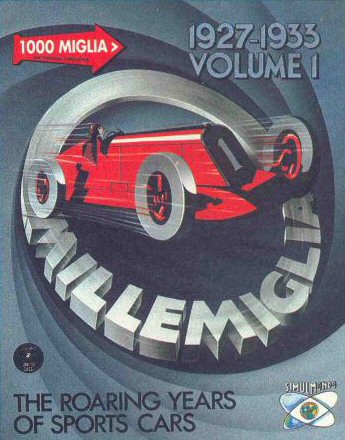 March 26, 1927, the starting gun is about to signal the drivers to
begin a brand new race, an automobile race which was so enormously
difficult to set up that its creators honestly believed that this race
would be the first and last of its kind: the 1000 MIGLIA.
March 26, 1927, the starting gun is about to signal the drivers to
begin a brand new race, an automobile race which was so enormously
difficult to set up that its creators honestly believed that this race
would be the first and last of its kind: the 1000 MIGLIA.
New regulations issued by the International Federation of Racing
reducing engine capacity in terms of cubic centimeters had caused
Italian automobile companies, who were manufacturing cars with much
greater potentials, to withdraw from competitive racing. In December
1926, four friends, three car racing enthusiasts and a reporter from
the "Sports Gazzette", got together to see what they could dream up in
order to save the sport from certain death.
Aymo Maggi, Franco Mazzotti, Renzo Castagneto and Giovanni Canestrini,
came up with the idea of a wild round-trip excursion from Brescia to
Rome and back to Brescia again.
The round trip totalled one thousand six-hundred kilometers or one
thousand miles and so, Franco Mazzotti thought of calling the race
"The 1000 MILE Cup", later shortened to 1000 MIGLIA.
The race was such a great success that it was decided to repeat it
once a year and it was, (except during World War II), until the late
1950's. It immediately gained fame and notoriety in Italy and, over
the years, throughout the entire world. Within no time, the 1000
Miglia had become a tradition involving thousands of people
everywhere.
The first drivers to participate in the race looked and acted more
like the transaltlantic airplane pilots of the day than like
automobile racers. They were the pioneers of road racing where the
difficulties and hazards of unpaved streets replete with rocks, dust,
and mud when it rained, had to be faced and overcome in regular
everyday asssembly line cars.
|

Once out of Brescia, each team had to face its own destiny: the
participants were tried physically and tested as to their mechanical
skill.
Many consider the 1000 MIGLIA a determinant in the future technical
advances which were to take place in the automobile industry.
Any breakdown which occurred during the race from a flat to a
mechanical problem had to be seen to by the racers. (There were always
two persons to a car, one was usually a better driver and the other a
more skillful mechanic). This meant that they had to be good at
improvising repairs on the spot and quite versed in how cars were
built and how they ran.
All of this has bestowed the 1000 Miglia with something wonderful and
magical completely out of touch with the technological and consumer
oriented environment in which modern day automobile competitions are
raced. Money was not the driving force to make people want to
participate, each person's innate spirit of adventure was. The desire
to try oneself against one's own limits and not against an opponent
made these drivers go beyond history to become legends: Brilli Peri,
Nuvolari, Borzacchini, Fagioli and all the others who raced.
We at SIMULMONDO wanted to recreate the atmosphere which surrounded
the 1000 MIGLIA by simulating actual historical situations. It wasn't
easy as the photographs of the period aren't very good ones and this
made reconstruction difficult.
But we did the best we could and we believe to have succeeded in our
intent especially thanks to the support given us by our researchers
and by the help afforded us by the Historical Documentation Center of
Brescia's "MILLE MIGLIA" company and by Dr. Costantino Franchi who
conceded us the rights to the trademark and name.
We believe that with 1000 MIGLIA-VOLUME 1, SIMULMONDO has brought you
a totally different version of the automobile simulators on the market
today and we hope that it will give you the chance to feel the
excitement which was so integral a part of THE ROARING YEARS OF SPORTS
CARS.
|
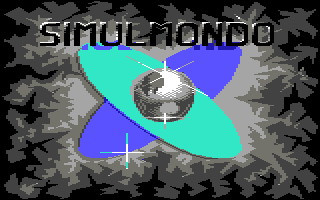 |
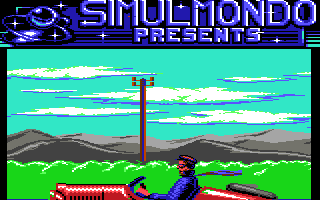 |
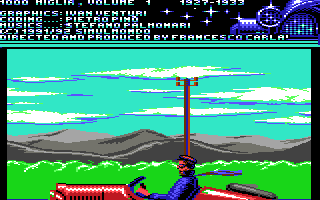 |
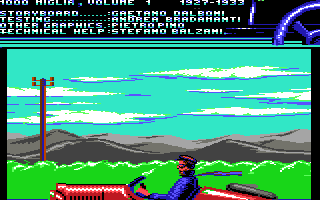 |
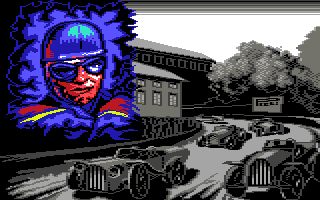 |
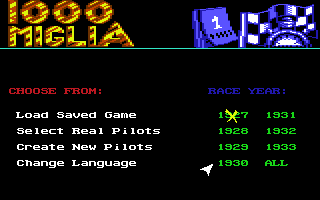 |
 |
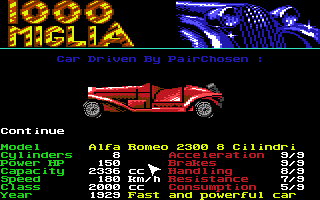 |
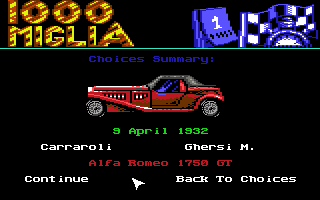 |
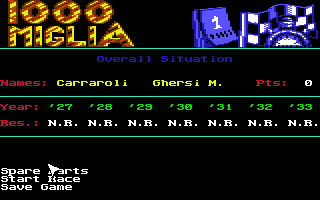 |
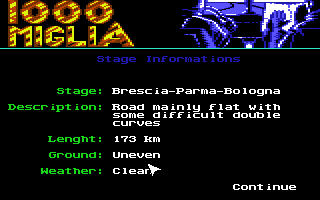 |
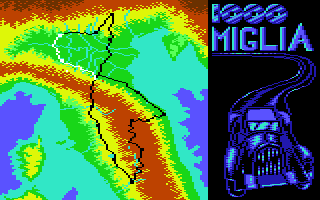 |
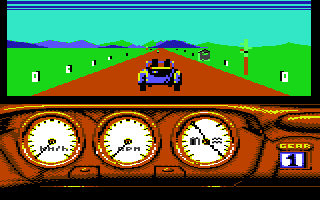 |
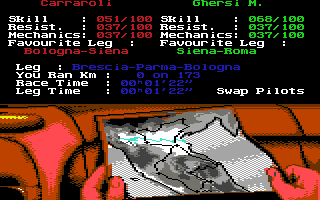 |
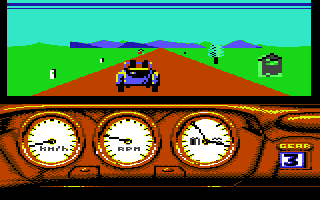 |
 |